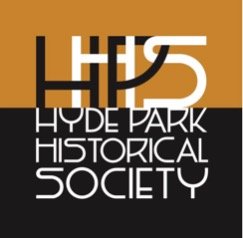Paul Cornell- Founder of Hyde Park
[fusion_builder_container hundred_percent="yes" overflow="visible"][fusion_builder_row][fusion_builder_column type="1_1" background_position="left top" background_color="" border_size="" border_color="" border_style="solid" spacing="yes" background_image="" background_repeat="no-repeat" padding="" margin_top="0px" margin_bottom="0px" class="" id="" animation_type="" animation_speed="0.3" animation_direction="left" hide_on_mobile="no" center_content="no" min_height="none"] Born in 1822 of a distinguished New England family, Paul Cornell was a cousin of Ezra Cornell, the founder of Cornell University. He came to Chicago in 1847. A lawyer and entrepreneur, he became friendly with many of the leading citizens of the rising new town. On the advice of Senator Stephen Douglas, he invested in land south of the city. In 1853 he bought 300 acres of lakefront land--and named his purchase Hyde Park, after the London park.By deeding land for a right-of-way to the Illinois Central Railroad he assured connections to the city. He built a hotel and sold wealthy Chicagoans the idea of Hyde Park as a resort. Soon he was able to sell lots to some of the same people for year round houses in the new suburb, Hyde Park Village.Within ten years there were one thousand residents in the community. His holdings grew to comprise forty-eight square miles--some areas designated for manufacturing, others for lower-cost housing. This larger area, Hyde Park Township, was annexed to the city of Chicago in 1889.Among his many accomplishments, one that remains a delight to the present day is the park system Paul Cornell developed- Jackson and Washington Parks, designed by Frederick Law Olmsted and Calvert Vaux. His dream of having a university in his new community came true with the founding of the University of Chicago in 1890. The gray city--the Gothic buildings of the University--arose next to the White City, the World's Columbian Exposition.[/fusion_builder_column][/fusion_builder_row][/fusion_builder_container]
Born in 1822 of a distinguished New England family, Paul Cornell was a cousin of Ezra Cornell, the founder of Cornell University. He came to Chicago in 1847. A lawyer and entrepreneur, he became friendly with many of the leading citizens of the rising new town. On the advice of Senator Stephen Douglas, he invested in land south of the city. In 1853 he bought 300 acres of lakefront land--and named his purchase Hyde Park, after the London park.By deeding land for a right-of-way to the Illinois Central Railroad he assured connections to the city. He built a hotel and sold wealthy Chicagoans the idea of Hyde Park as a resort. Soon he was able to sell lots to some of the same people for year round houses in the new suburb, Hyde Park Village.Within ten years there were one thousand residents in the community. His holdings grew to comprise forty-eight square miles--some areas designated for manufacturing, others for lower-cost housing. This larger area, Hyde Park Township, was annexed to the city of Chicago in 1889.Among his many accomplishments, one that remains a delight to the present day is the park system Paul Cornell developed- Jackson and Washington Parks, designed by Frederick Law Olmsted and Calvert Vaux. His dream of having a university in his new community came true with the founding of the University of Chicago in 1890. The gray city--the Gothic buildings of the University--arose next to the White City, the World's Columbian Exposition.[/fusion_builder_column][/fusion_builder_row][/fusion_builder_container]


